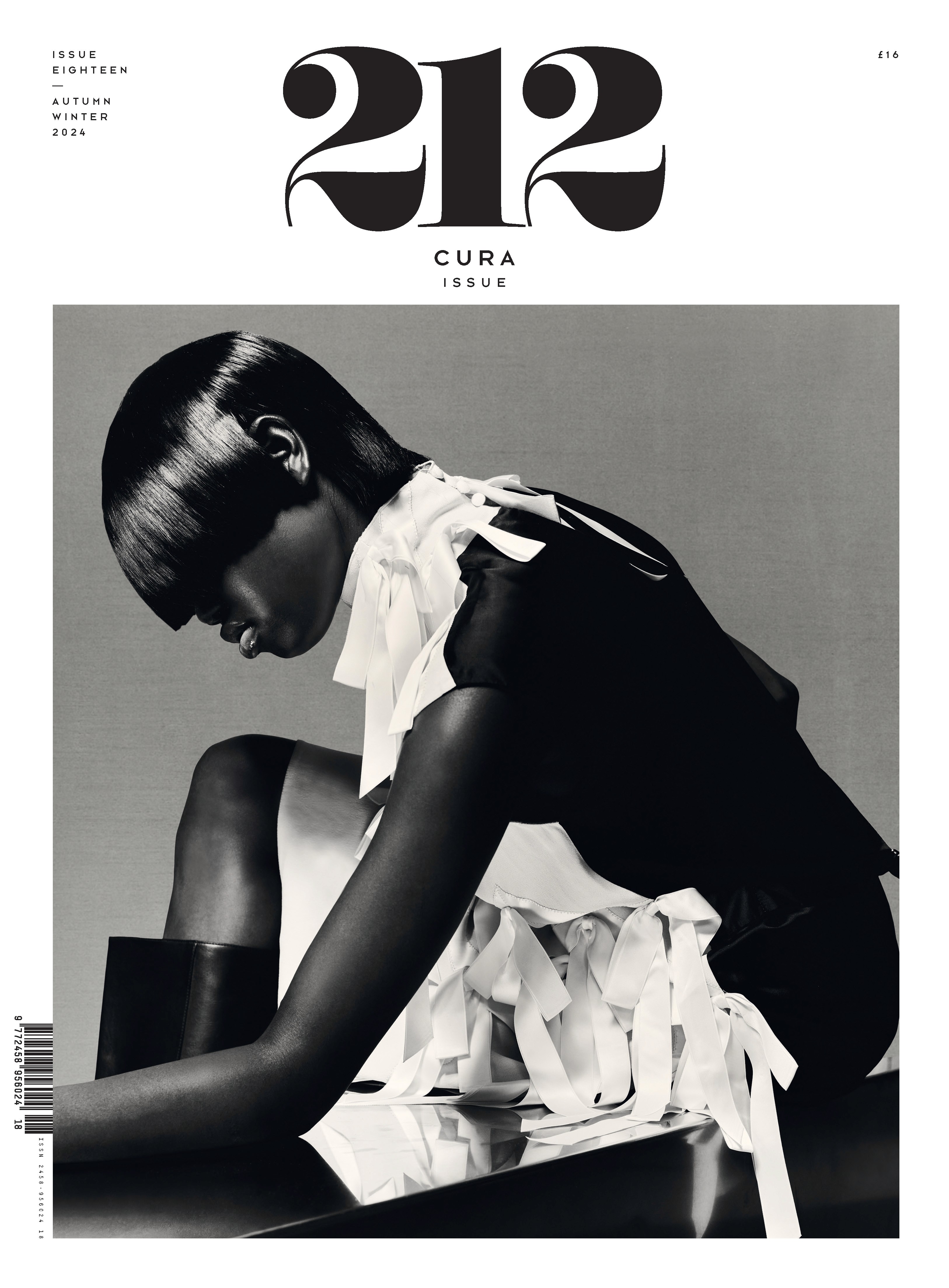

A cousin of pop-art and a close friend of kitsch; one of the most important representatives of La Movida… Ouka Leele’s playful, daring and perplexing creations offer the viewer carnivalesque portraits and scenes.
PHOTOGRAPHY BY OUKA LEELE TEXT BY DAMLA KELLECİOĞLU
La Movida was one of the most striking exhibitions at the 50th edition of the world-famous Les Rencontres de la Photographie in Arles. The exhibition featured selected works from Alberto García-Alix, Pablo Pérez-Minguez & Miguel Trillo and Ouka Leele – some of the most important actors of the art movement which took Spain by storm during much of the ’70s and ’80s. Heavily influenced by the French New Wave movement, La Movida was born as a counter-culture that was close to punk, right in the heart of social transformation towards democracy, building on a new Spanish identity following 40 years under Franco’s dictatorship. It was apolitical, but the work did not shy away from alluding to the artists’ traumas. In a period that lasted from the ’70s until the mid-’80s, works focused on vivid colours, the human body, objects, and absurd situations and scenes.

As one of the leading representatives of La Movida, Bárbara Allende Gil de Biedma acquired her nickname, ‘Ouka Leele’, from a star map made by her good friend, El Hortelano. According to Leele, painting is a means of communication, like speaking. Her most famous series, La Peluquer.a (1978) includes portraits of relatives, close friends, neighbours and some famous models. Ouka Leele makes still life, portraits, landscapes and nudes. She writes beautiful poetry about Madrid, the hometown of the artist and the movement:
It looks you straight in the eye
For me, Madrid is behind these white curtains before you
the Gran Via and its cars,
and one of those angels
on the rooftops of Madrid.
…
And in the background, another curtain from another window
flutters and fills with reflections,
with that light that only exists in Madrid at twelve
noon.
And that delightful, fresh smell appears,
endearing, childish, like a polluted street.
A cousin of pop-art and a close friend of kitsch; one of the most important representatives of La Movida… Ouka Leele’s playful, daring and perplexing creations offer the viewer carnivalesque portraits and scenes.
PHOTOGRAPHY BY OUKA LEELE TEXT BY DAMLA KELLECİOĞLU
La Movida was one of the most striking exhibitions at the 50th edition of the world-famous Les Rencontres de la Photographie in Arles. The exhibition featured selected works from Alberto García-Alix, Pablo Pérez-Minguez & Miguel Trillo and Ouka Leele – some of the most important actors of the art movement which took Spain by storm during much of the ’70s and ’80s. Heavily influenced by the French New Wave movement, La Movida was born as a counter-culture that was close to punk, right in the heart of social transformation towards democracy, building on a new Spanish identity following 40 years under Franco’s dictatorship. It was apolitical, but the work did not shy away from alluding to the artists’ traumas. In a period that lasted from the ’70s until the mid-’80s, works focused on vivid colours, the human body, objects, and absurd situations and scenes.

As one of the leading representatives of La Movida, Bárbara Allende Gil de Biedma acquired her nickname, ‘Ouka Leele’, from a star map made by her good friend, El Hortelano. According to Leele, painting is a means of communication, like speaking. Her most famous series, La Peluquer.a (1978) includes portraits of relatives, close friends, neighbours and some famous models. Ouka Leele makes still life, portraits, landscapes and nudes. She writes beautiful poetry about Madrid, the hometown of the artist and the movement:
It looks you straight in the eye
For me, Madrid is behind these white curtains before you
the Gran Via and its cars,
and one of those angels
on the rooftops of Madrid.
…
And in the background, another curtain from another window
flutters and fills with reflections,
with that light that only exists in Madrid at twelve
noon.
And that delightful, fresh smell appears,
endearing, childish, like a polluted street.
A cousin of pop-art and a close friend of kitsch; one of the most important representatives of La Movida… Ouka Leele’s playful, daring and perplexing creations offer the viewer carnivalesque portraits and scenes.
PHOTOGRAPHY BY OUKA LEELE TEXT BY DAMLA KELLECİOĞLU
La Movida was one of the most striking exhibitions at the 50th edition of the world-famous Les Rencontres de la Photographie in Arles. The exhibition featured selected works from Alberto García-Alix, Pablo Pérez-Minguez & Miguel Trillo and Ouka Leele – some of the most important actors of the art movement which took Spain by storm during much of the ’70s and ’80s. Heavily influenced by the French New Wave movement, La Movida was born as a counter-culture that was close to punk, right in the heart of social transformation towards democracy, building on a new Spanish identity following 40 years under Franco’s dictatorship. It was apolitical, but the work did not shy away from alluding to the artists’ traumas. In a period that lasted from the ’70s until the mid-’80s, works focused on vivid colours, the human body, objects, and absurd situations and scenes.

As one of the leading representatives of La Movida, Bárbara Allende Gil de Biedma acquired her nickname, ‘Ouka Leele’, from a star map made by her good friend, El Hortelano. According to Leele, painting is a means of communication, like speaking. Her most famous series, La Peluquer.a (1978) includes portraits of relatives, close friends, neighbours and some famous models. Ouka Leele makes still life, portraits, landscapes and nudes. She writes beautiful poetry about Madrid, the hometown of the artist and the movement:
It looks you straight in the eye
For me, Madrid is behind these white curtains before you
the Gran Via and its cars,
and one of those angels
on the rooftops of Madrid.
…
And in the background, another curtain from another window
flutters and fills with reflections,
with that light that only exists in Madrid at twelve
noon.
And that delightful, fresh smell appears,
endearing, childish, like a polluted street.

is a large format international biannual magazine from Istanbul. Focusing on arts, culture and society, each issue tackles various universal subjects within a distinct theme.
Address
Karaköy Tarihi Un Değirmeni Binası, Kemankeş Mahallesi, Ali Paşa Değirmen Sokak 16, 34425, Karaköy Istanbul, Turkey
+90 212 232 4288
contact@212magazine.com

is a large format international biannual magazine from Istanbul. Focusing on arts, culture and society, each issue tackles various universal subjects within a distinct theme.
Address
Karaköy Tarihi Un Değirmeni Binası, Kemankeş Mahallesi, Ali Paşa Değirmen Sokak 16, 34425, Karaköy Istanbul, Turkey
+90 212 232 4288
contact@212magazine.com

is a large format international biannual magazine from Istanbul. Focusing on arts, culture and society, each issue tackles various universal subjects within a distinct theme.
Address
Karaköy Tarihi Un Değirmeni Binası, Kemankeş Mahallesi, Ali Paşa Değirmen Sokak 16, 34425, Karaköy Istanbul, Turkey
+90 212 232 4288
contact@212magazine.com

